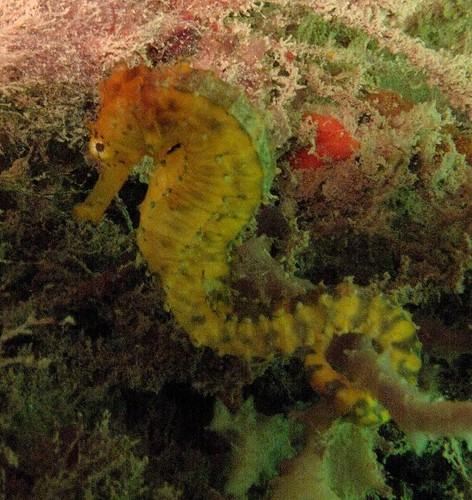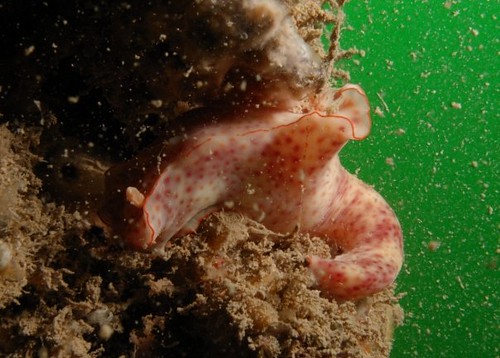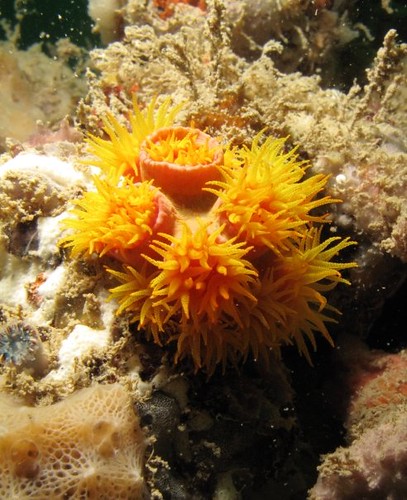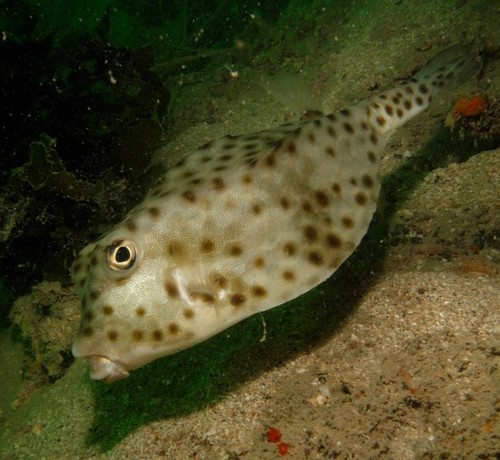Blog Log, 26 July 2009 (cont'd)
 August 2, 2009
August 2, 2009

Tigertail seahorse PHOTO: Cindy Tan
It’s real handy to have so many photographers out on a trip. The better it enables us to share with you and non-divers, the splendours that exist beneath the surface of Singapore’s waters. Regular Hantu Blog diver (and soon to be volunteer) Cindy Tan, is a real good spot when it comes to tiny things. She’s a real patient photographer and she loves sea horses and nudibranchs, or anything that’s hard to find.

Ceratosoma nudibranch PHOTO: Cindy Tan
When on the reef, and to the untrained eye, the Ceratosoma nudibranch is a master of disguise and practically invisible to the eye. It’s colours and pattern have proven very effective at breaking up its outline, at least on Hantu reef. But once a diver gets the hang of it, they’re pretty easy to spot! The Slender Ceratosoma is one of the most common sea slugs we find on the reef of this Genus and was really only commonly sighted on the past 2 years. Which brings us to consider, what more we might encounter the more we dive this reef – that is, if the reef remains around for more good years.

Flatworm PHOTO: Cindy Tan
Cindy came up with a great idea this time around and that was to bring a ruler down so you really get a sense of how minuscule these creatures she’s looking at are! Sometimes when divers accidentally kick into the silt, you literally see tiny animals being carried up and tossed into the currents! The reef is only as barren as you perceive it to be. But despite how bare it may look, closer inspection always reveals a pleasant surprise.

Turbinaria recruit PHOTO: Cindy Tan
Though some parts of the reef have been decimated by the settling of silt sediments, one of the great things about the reef is that it seems relatively robust and there’s always lots of tiny new corals bursting into life! These young delicate corals are called recruits and they have a long way to go before they establish themselves as robust organisms on the reef. Even when they do finally reach a really mature age, they’re certain things they can’t hold up too for too long, such as the effects of coastal development activities.

Blue dragon nudibranch PHOTO: Cindy Tan
A prominent and plentiful creature on the reef, the blue dragon nudibranch harbours algae in its tissue that help it produce acquire additional sustenance when the algae photosynthesizes.

Shortnose Boxfish (Ostracion/Rhynchostracion nasus) PHOTO: Cindy Tan
Cindy has a rare encounter with a boxfish on the reef.

Small-spotted Leatherjacket (Pseudomonacanthus macrurus) PHOTO: Cindy Tan
Though Leatherjackets or Filefish are common on the reef, few divers might be able to tell the several species apart. It doesn’t help that these fish are capable of changing their colour quiet rapidly if suddenly startled or when resting. With the help of Kelvin Lim at the Raffles Museum of Biodiversity Research, we’re managed to identify the pair above as Small-spotted Leatherjackets. These are not the most common species on the reef.

Bend-stick Pipefish (Trachyrhamphus bicoractatus) PHOTO: Cindy Tan
Though we already saw this pipefish in the previous post with photos taken by Jimmy Goh, I’d thought I’d include this picture because Cindy gives us a view of its entire body so we kind of get a sense of what it’s trying to achieve with camouflage. Don’t you think it sort of resembles a sea whip?!
 Posted in
Posted in 



 content rss
content rss
August 2nd, 2009 at 8:55 pm
Haha…that was what I was thinking too when HP pointed that Pipefish to us during last year anniversary dive….like “Why on earth is HP pointing a sea whip to us?” :o)
August 7th, 2009 at 6:40 pm
hahaha… debby… need to give credit where its due lah… to bring a ruler down was Pei Min’s… 🙂
August 11th, 2009 at 9:22 pm
The photos are great. Thank you for sharing. I am amazed at the small critters that you can see here. Most divers want to see the big stuff but the real secret to divingis to find the small stuff that shows the reef is alive. Well done!